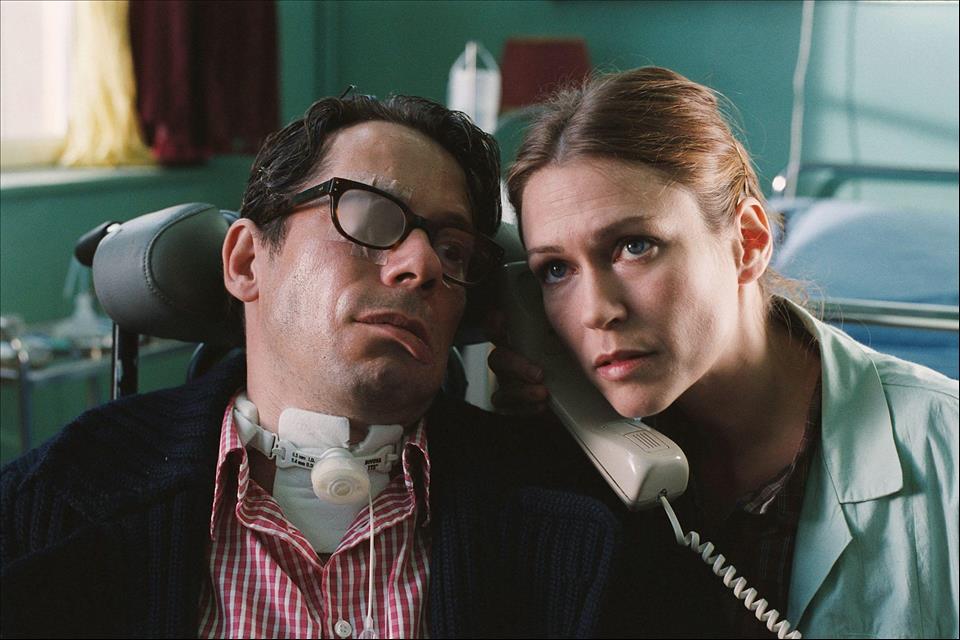
What Is Locked-In Syndrome? The Extraordinary Stories That Help Us Understand This Rare Condition
In some instances, locked-in syndrome paralyses all muscles. In others, some muscles escape paralysis and can act as a means of communication . The muscles surrounding the eye can still function in most locked-in patients, for example, so they may be able to move their eyes in different directions or blink their eyelids. In 2024, Howard Wicks completed a 50,000-word novel using specialist eye-gazing technology, despite being entirely paralysed by a stroke in 2011.
Brainstem strokes are a principal cause of locked-in syndrome, but there are others. Sometimes it can arise as a result of brain injury, or from nerve damage by a growing brain tumour. Motor neurone disease, or amyotrophic lateral sclerosis (ALS), may also in its later stages cause whole-body paralysis.
Martin Pistorius's 2011 memoir, Ghost Boy, tells the story of how, in 1988 at the age of 12, he fell unconscious for three years, possibly as a result of a brain infection. Pistorius awoke in a locked-in state, then slowly regained the ability to communicate and some function in his upper body.
But perhaps the most famous person with locked-in syndrome is the French journalist and editor, Jean-Dominique Bauby , who developed the condition after suffering a brainstem stroke in 1995. While he retained movement in the eyelids of his left eye, the right one suffered irritation and had to be sewn shut.
Even with such minimal movement, Bauby was able to communicate with his clinicians and carers. A therapist read out a list of letters according to their frequency of use in the French language, and Bauby blinked when she arrived at the letter he wanted to use, in order to painstakingly spell out words. Over time he not only communicated his thoughts and requests, but took up a previous offer from a publishing house to write a book .
The result was Le Scaphandre et le Papillion (The Diving Bell and the Butterfly) – written every day over two months, using some 200,000 blinks, with Bauby completing one word every two minutes, on average.
Strokes such as the one Bauby had occur when a blood vessel in the brain becomes blocked or bursts. This cuts off blood supply to a region of the brain, and can damage the delicate nervous tissue.
Most often, strokes occur in the middle cerebral artery – the vessel supplying the sides of your brain. This contains an area called the primary motor cortex, which controls your ability to move. If this area of the brain is damaged, the patient may suffer drooping of the face, limb weakness and slurring of speech. If so, it's time to call for an ambulance – fast .
The brainstemThe brain and spinal cord form the central nervous system (CNS) . One of the many roles of the CNS is to receive and process sensory information from the environment – to make sense of where we are, and what we're doing.
The brain also sends messages to muscles, commanding them to move. The spinal cord is the highway for these messages entering and leaving the brain. Sensory information goes up the cord into the brain, then motor signals go back down the cord toward our muscles.
The interface between the spinal cord and the upper brain is the brainstem. It looks much like a stalk and is composed of three main structures: the midbrain, pons, and medulla oblongata. These continue the work of the spinal cord in transmitting information to the cerebral cortex – the cauliflower-shaped portion of the brain – where sensations are formulated and actions are initiated.
Bauby suffered a brainstem stroke, damaging the motor nerves heading back towards the spinal cord. This cuts off the brain's ability to control the muscles, paralysing them. Muscle action does more than just move our arms and legs, of course – it controls our ability to talk, breathe and swallow.
This is how the term locked-in syndrome applies: the patient is conscious but paralysed. Their ability to see, hear, think and feel remains intact – and so they are“locked in” their own body.
Reflecting on locked-in syndrome offers us a glimpse into the complexities of our nervous system, and the essential role it plays in commanding our bodies. The extraordinary stories of people who live with this condition should make us thankful of the everyday privilege of being able to walk and talk, without effort.

Legal Disclaimer:
MENAFN provides the
information “as is” without warranty of any kind. We do not accept
any responsibility or liability for the accuracy, content, images,
videos, licenses, completeness, legality, or reliability of the information
contained in this article. If you have any complaints or copyright
issues related to this article, kindly contact the provider above.















Comments
No comment